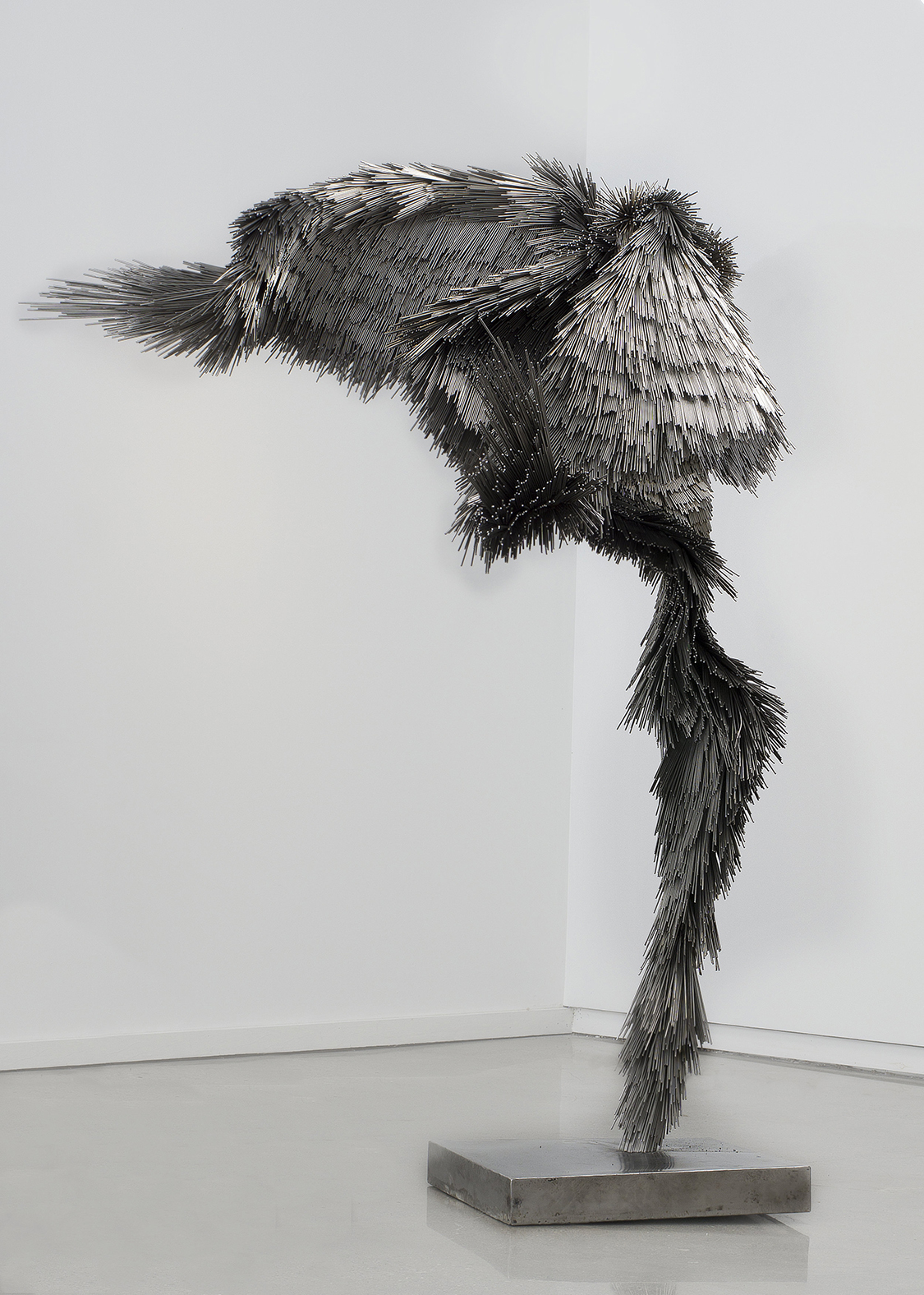
Jake Michael Singer is a transdisciplinary artist born in Johannesburg, South Africa, in 1991.
He works in sculpture, photography, drawing and painting, and describes his artistic approach as being primarily concerned with materiality, myth and catharsis.

He has created large-scale, site-specific installations in historically significant structures. In addition, he has held several exhibitions in Europe and his work is found in private collections in South Africa, Germany, Greece, Canada, Turkey, the UK and the USA.

His sculpture series called Murmurations is a continuously expanding collection of sculptures. The largest ones are up to almost three metres high and the smaller ones reach 70 centimetres in height. The largest ones use up to 16,000 metres of marine-grade stainless steel rods, industrially produced for use mainly for fences.
Singer talks about the paradox between the birds and the fence, and the dialogue between freedom and security, migration and captivity. He describes the sculptures also as a life-affirming celebration of our collective humanity.

The sculptures appear sharp and somewhat menacing while clearly depicting arrested flight; something that was moving before it was captured in the sculpture. Singer’s inspiration for Murmurations is not just the softly undulating flock of birds that creates a singular, ever-moving form, but also the timeless monumentality of the Winged Victory of Samothrace, also known the Nike of Samothrace.
Samothrace is a Greek island in the Aegean Sea. Its name is known today because of the masterpiece sculpture on the island from the Hellenistic era, from the beginning of the 2nd century BC. It is almost six metres tall including the base. The sculpture, representing the goddess of victory, Nike, has been exhibited at the top of the main staircase, in the Louvre Museum in Paris since 1884. Greece is seeking the return of the sculpture.

Murmuration is a form of flocking of birds. While flocking of birds in general is common, the term murmuration is used specifically to describe a group of flying starlings that create elegant sky art. Sometimes as many as 750,00 starlings can join in the constantly shape-shifting cloud of flying birds. The term is based on the sound of a low murmur that the thousands of wings make. It is thought that murmuration may be a defense act to gather as many starlings a possible into a single night roost. Tuija Seipell

Source: The Cool Hunter

